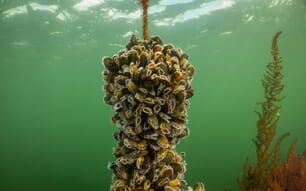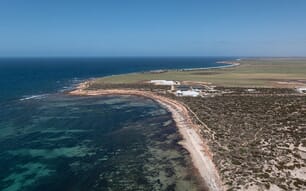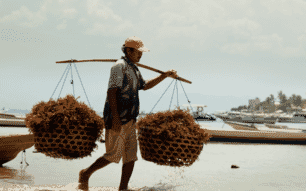It would turn the tide of a decades-long decline that has caused halibut catches to be slashed by more than 70 per cent in Alaska, Washington, Oregon and British Columbia.
Three Alaska areas showed improvement in the annual stock surveys that range from Oregon to the Bering Sea, and could have higher catch levels in 2015. That’s according to information revealed at the International Pacific Halibut Commission’s interim meeting last week in Seattle.
Two are the most prime halibut fishing spots – Southeast and the Central Gulf; the third is the Alaska Peninsula region.
The surveys showed that the fish are still growing much slower than normal, but after more than a decade of conservative management, the halibut stock is showing signs of rebounding.
Surveys this year showed total weights per unit of effort (fishing gear) were 6 per cent higher than in 2013.
“The trend estimates for this year are a bit more optimistic,” said Ian Stewart, a quantitative scientist with the IPHC. “What we are starting to see is more sensitivity to management actions than we have seen in previous years. As the stock begins to stabilize at this level, the level of catch is becoming relatively even more important to future trends.”
Stewart added that it’s unclear what is causing the individual halibut to grow so slowly.
“Probably climate change and prey, or competition with other species, perhaps density dependence and size selective fishing are all playing a role,” he said.
One change in factoring the halibut catches is a full accounting for all sizes and sources of fish removals, including for the first time guided sport charters.
The 2014 coast wide halibut catch was 27.5 million pounds; Alaska’s share was about16 million pounds. Final catch decisions for 2015 will be made at the IPHC annual meeting Jan. 26-30 in Vancouver. (www.iphc.int)
One fish, two fish - The tallies for all that seafood crossing the Alaska docks this year are trickling out from various fishing agencies, and as usual, they show ups and downs.
Starting with salmon, the 2014 statewide harvest totaled 157 million fish with a dockside value of nearly $577 million. That’s 116 million fewer salmon than last year, and $113 million less, according to the state Commercial Fisheries Division.
Prices to fishermen took a dip for three of the five salmon species:
Chinook salmon averaged $4.07 per pound, compared to $5.31 last year; sockeyes averaged $1.37, down from $1.60. For pink salmon, the average price was $.30 a pound, down a dime. On the up side, coho prices increased by $.07 to average $1.15; likewise, chums increased $.08 to $.60 pound.
Alaska’s halibut fishermen enjoyed high halibut prices during the eight month season that ended in early November. This year 1,989 long liners participated in the fishery, 35 less than last year, said Troie Zuniga at NOAA Fisheries in Juneau.
The average dockside halibut price this year was $6.36 a pound, an increase of $1.30 over last year. Still, the overall dockside value of the halibut fishery at $100 million is down $5 million from last year.
Once again, Homer held on to the top spot for halibut landings beating out Kodiak by less than 150,000 pounds for the season (2,762,345 pounds vs. 2,613,194). Seward and Petersburg were the other top ports for halibut landings.
For sablefish, or black cod, the average fisherman’s price was $3.59 a pound this year, a $.55 increase. The value of Alaska’s sablefish fishery at $76 million is $4 higher than last year.
The value of the red king crab fishery at Bristol Bay took a big dip in 2014 to $209 million, down $22 million from a year ago. The decrease is blamed primarily on competition from pirated king crab from Russian fleets that is flooding the market. The Alaska crab price this year averaged $6.10, down more than a dollar.
Tanner time out - The popular Tanner crab fishery at Kodiak is on hold again for a second year; likewise, at Chignik and the Alaska Peninsula.
“Based on the results of our 2014 crab survey, the abundance of legal sized male Tanner crab were all below the minimum threshold for us to have a commercial fishery,” said Mark Stichert, area manager at the Alaska Dept. of Fish and Game at Kodiak.
There is a bright side – the surveys also showed one of the largest waves ever poised to enter the Tanner fishery since the late 1980s.
“In fact, the total abundance of crab specifically in Kodiak was the third or fourth highest in the time series of our survey. So there is still a lot of Tanner crab in the water, but they are fairly small,” Stichert added.
The crab recruits measure between 2.5-3.5 inches, Stichert said, still shy of the 5.5 inch legal size.
“So we are cautiously optimistic that those crab will continue to persist and translate into a fishery down the road. But we are looking forward to potentially having stronger seasons again, or reopening again, potentially next year and more likely 2017,” he added.
It takes about six years for Tanner crab to grow to their full, two pound size. That’s an educated guess, Stichert said, because crabs can’t be aged by scales or ear bones, like other species.
“We think a male Tanner crab will molt up to 15 to 16 times throughout their life history, but we don’t really have a method of aging crab and getting a good idea of how much they grow year to year, or how old they really are when they hit the fishery,” he explained.
The mid-January Tanner season provides a nice mid-winter boost to 50 or more Kodiak boats and about 30 at the Peninsula. The 2013 total catch was less than one million pounds but it still brought in several million dollars to local communities.
Share the Sea – Providing one million seafood meals to hungry Americans during the holidays is the goal of a month long campaign by SeaShare, a Seattle-based nonprofit that for 20 years has provided seafood to food banks across the nation.
Starting with its ‘bycatch to food banks’ campaign in the 1990s, SeaShare has built a nationwide network that includes fishermen, seafood processors, freight, storage and packaging companies and financial donors to get valuable seafood protein to the needy.
The Share the Sea campaign began Dec.1 and aims to receive enough donations to provide one million servings of seafood to the food bank network. For every dollar donated, SeaShare can access eight servings of seafood. Donate at www.seashare.org



